-
RESEARCH01-01-2018
Phytotherapy in pediatrics: the production of knowledge and practices in Primary Care
Revista Brasileira de Enfermagem. 2018;71:637-645
Abstract
RESEARCHPhytotherapy in pediatrics: the production of knowledge and practices in Primary Care
Revista Brasileira de Enfermagem. 2018;71:637-645
DOI 10.1590/0034-7167-2017-0436
Views0See moreABSTRACT
Objective:
To demonstrate the use of phytotherapy as a therapy adopted in the context of Primary Care to Childhood.
Method:
Observational and analytical field research, with quantitative-qualitative approach. A semi-structured survey was used on socio-demographic and ethnopharmacological variables, audio interview and daily observation.
Results:
The production of knowledge about phytotherapy constitutes a family heritage, but incorporated data resulting from the daily experiences shared by the community. The main factors were: easy access to this resource, high costs of conventional treatment, difficulty in accessing medical services and belief in the power of plants. The attributed meanings were: prevention and treatment of injuries, rescue of memory and of experiences, factor integrative with nature and aggregative among members of the community.
Final considerations:
Rescuing this tradition brings a new meaning to health care.
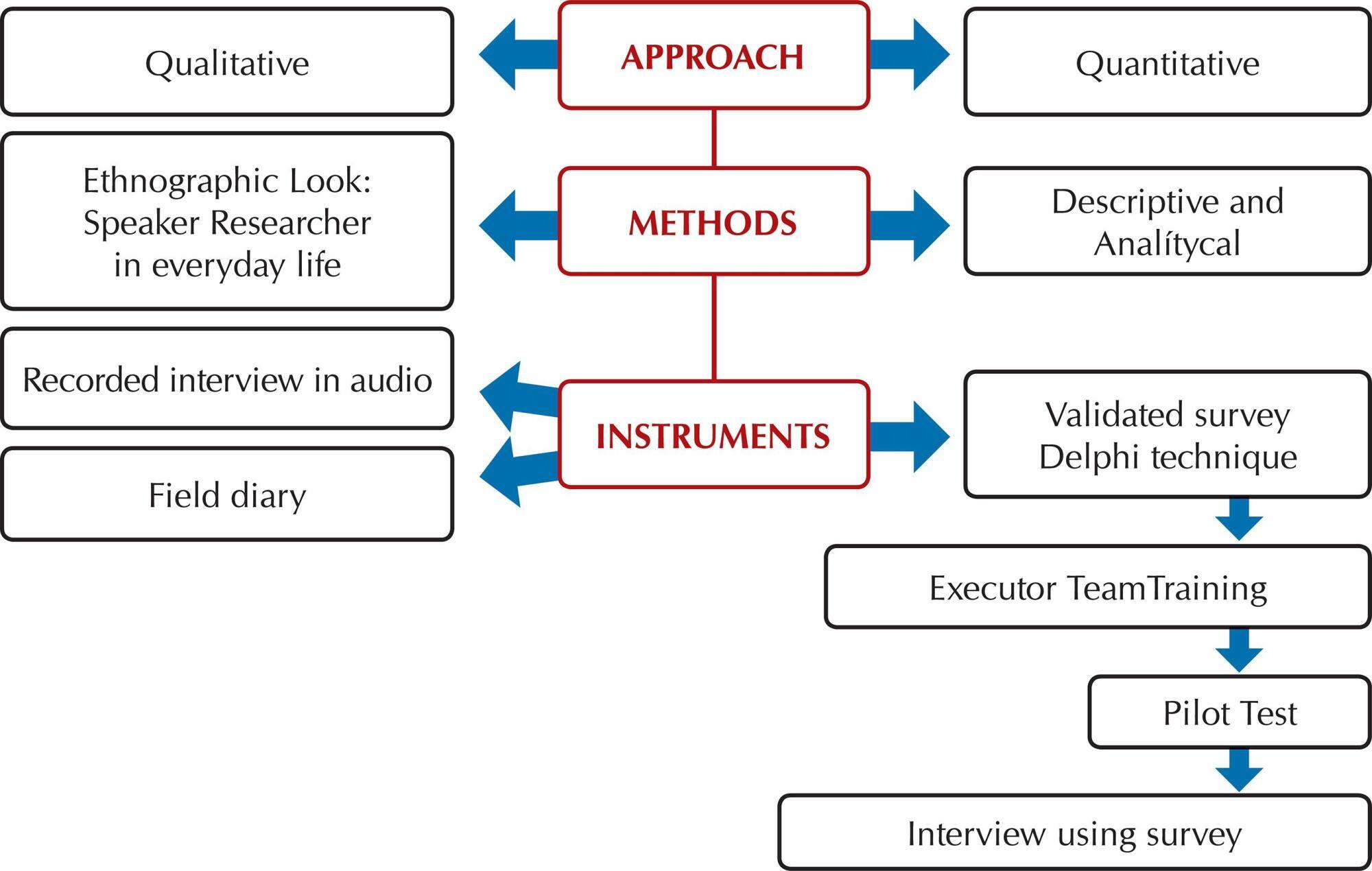
-
RESEARCH01-01-2018
Perception of nurses who perform rapid tests in Health Centers
Revista Brasileira de Enfermagem. 2018;71:631-636
Abstract
RESEARCHPerception of nurses who perform rapid tests in Health Centers
Revista Brasileira de Enfermagem. 2018;71:631-636
DOI 10.1590/0034-7167-2017-0298
Views0See moreABSTRACT
Objective:
Learn about the perception of health professionals who perform rapid tests in Health Centers (HCs).
Method:
This is a descriptive and qualitative study conducted in nine HCs in Recife. Data were collected through individual interviews and evaluated using Bardin’s content analysis, in its thematic category.
Results:
Challenges were observed in rapid tests related to the supply of products, physical structure, training for pre- and post-test counseling, and the need for improvements in permanent education actions.
Final considerations:
These issues can be resolved with management improvements, systematization of permanent education activities, and definition of care flows that enable early diagnosis. Besides the diagnosis, care lines should be created for people living with HIV and AIDS who use the HCs for early health care process.
-
RESEARCH01-01-2018
Social support of people with HIV/AIDS: the Social Determinants of Health Model
Revista Brasileira de Enfermagem. 2018;71:625-630
Abstract
RESEARCHSocial support of people with HIV/AIDS: the Social Determinants of Health Model
Revista Brasileira de Enfermagem. 2018;71:625-630
DOI 10.1590/0034-7167-2017-0346
Views0See moreABSTRACT
Objective:
To analyze the social support of people with HIV/AIDS from the perspective of the Social Determinants of Health Model.
Method:
This was a cross-sectional study conducted in 2015 in an infectious disease outpatient clinic. The sample was made up of 116 people with HIV/AIDS. The data was collected through interviews, using a sociodemographic form and a social support scale. The data was analyzed using descriptive statistics, and Student’s t-tests and Mann-Whitney tests were performed to determine the association between social support and the social determinants of health.
Results:
Total social support was satisfactory, emotional support was influenced by smoking (p=0.0432) and instrumental support, by the number of people in the household (p=0.0003). The main source of instrumental and emotional support was relatives living outside the household, corresponding to 66.7% and 56.1%, respectively.
Conclusion:
It was found that smokers havelower emotional support and people living alone received less instrumental support.
-
RESEARCH01-01-2018
Evaluation study of the National Immunization Program Information System
Revista Brasileira de Enfermagem. 2018;71:615-624
Abstract
RESEARCHEvaluation study of the National Immunization Program Information System
Revista Brasileira de Enfermagem. 2018;71:615-624
DOI 10.1590/0034-7167-2017-0601
Views0See moreABSTRACT
Objective:
To carry out the National Immunization Program Information System (SIPNI) accessability assessment (EA), considering the description of the intervention, the elaboration of the theoretical-logical model and the identification of the evaluative questions.
Method:
A single case study with a qualitative approach, based on the system of seven elements proposed by Thurston and Ramaliu (2005). The SIPNI and the context of analysis, the vaccination rooms, were defined as the case.
Results:
The SIPNI description, based on documents and scientific evidence, made it possible to understand its operationalization, the main events that characterize it. The theoretical-logical model visually and systematically configured the SIPNI organization with details of the inputs, activities, products and expected effects. The evaluative questions were evaluated and validated to evaluate the SIPNI.
Final considerations:
The SIPNI is evaluable and presented a favorable scenario for its development. EA is an important strategy for planning subsequent evaluations, maximizing their potentials.
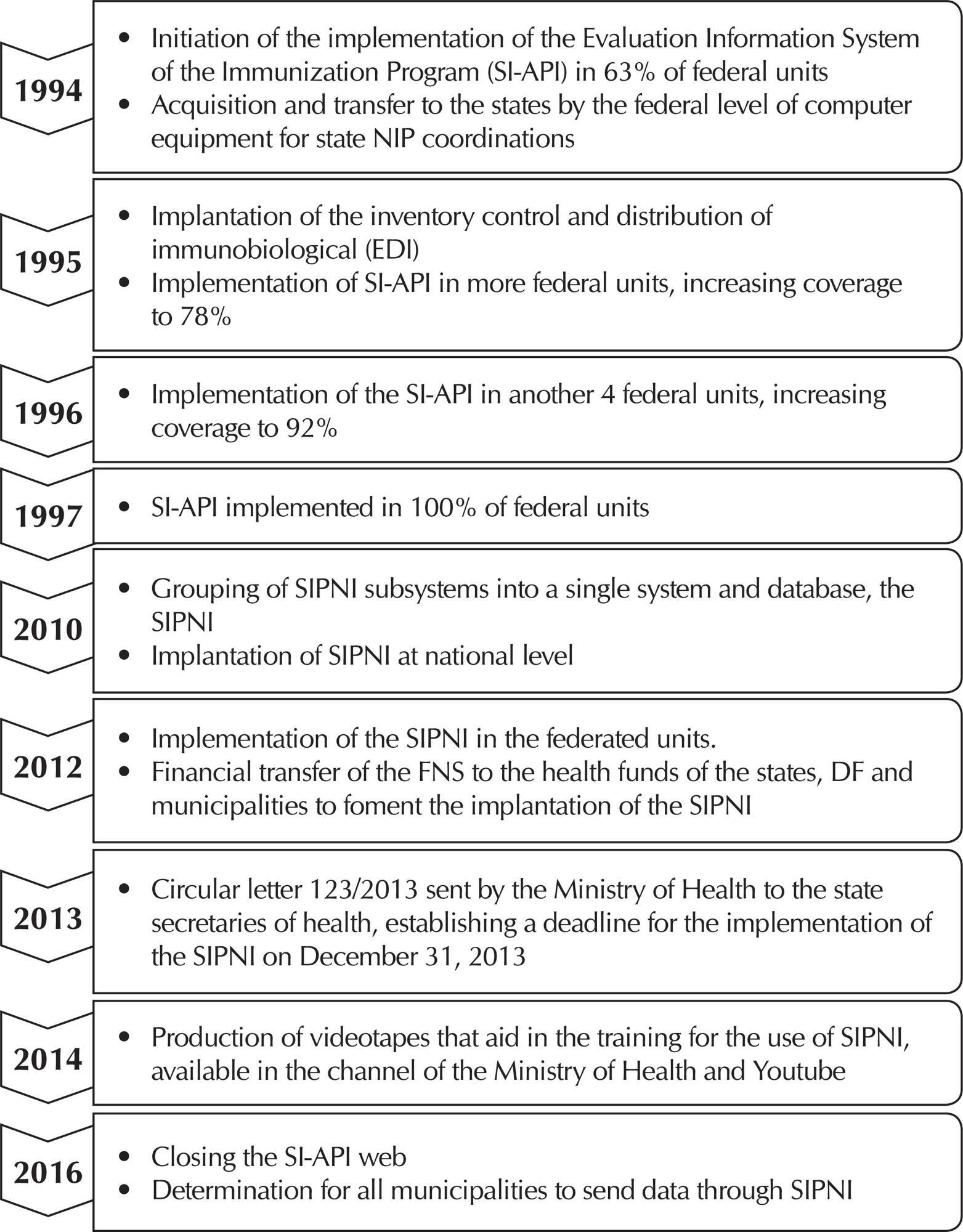
-
RESEARCH01-01-2018
Gender, sexuality and violence: perception of mobilized adolescents in an online game
Revista Brasileira de Enfermagem. 2018;71:607-614
Abstract
RESEARCHGender, sexuality and violence: perception of mobilized adolescents in an online game
Revista Brasileira de Enfermagem. 2018;71:607-614
DOI 10.1590/0034-7167-2017-0561
Views0See moreABSTRACT
Objective:
To identify and analyze the perception of high school students about violence in intimacy relations in adolescence, in the light of the category Gender.
Method:
A qualitative, descriptive and exploratory study, based on the comments of 27 adolescents participating in the online game, Papo Reto. The discourses were submitted to the analysis of thematic content and discussed in the light of the category Gender.
Results:
Adolescents naturalize violence in their relationships of intimacy, but when they recognize it, they react in several ways: with aggressions, dialoguing with the partner or seeking support from third parties.
Final considerations:
There were discordant perceptions regarding the phenomenon, most of which reiterated gender stereotypes. However, they reveal attitudes favorable to overcoming mainly related to the attainment of autonomy.
-
RESEARCH01-01-2018
Evaluation of the satisfaction of users of a service specialized in diabetes mellitus
Revista Brasileira de Enfermagem. 2018;71:599-606
Abstract
RESEARCHEvaluation of the satisfaction of users of a service specialized in diabetes mellitus
Revista Brasileira de Enfermagem. 2018;71:599-606
DOI 10.1590/0034-7167-2017-0554
Views0See moreABSTRACT
Objective:
to evaluate the satisfaction of users of a service that specializes in diabetes mellitus.
Method:
evaluative research, with mixed approach, developed at the Integrated Center for Diabetes and Hypertension of Barbalha-CE, in the period from 2011 to 2014, with 97 users. Data concerning the characterization and satisfaction of users in relation to the dimensions of infrastructure, accessibility and the user-health team relationship were collected.
Results:
77.3% were older adults, 88.7% women and 84.8%, retired. 63.9% of the users were satisfied with the service; however, dissatisfaction with the dimensions of infrastructure (offices, equipment and medicines) and accessibility (laboratory tests and medical consultations) was reported.
Final considerations:
most users revealed be satisfied with the service received considering the dimensions analyzed. However, studies that assess the satisfaction of users need to contemplate the participants’ reports and not rely on the use of previously structured forms only.
-
RESEARCH01-01-2018
Aging demographic profile in municipalities in the state of Pará, Brazil
Revista Brasileira de Enfermagem. 2018;71:591-598
Abstract
RESEARCHAging demographic profile in municipalities in the state of Pará, Brazil
Revista Brasileira de Enfermagem. 2018;71:591-598
DOI 10.1590/0034-7167-2017-0070
Views0See moreABSTRACT
Objective:
To investigate socioeconomic and demographic differences regarding population aging in municipalities of the state of Pará, Brazil.
Method:
Ecological study with secondary demographic, socioeconomic and health data from the 144 municipalities of the state of Pará, Brazil. Data were treated with segmentation analysis, the Mann-Whitney U test and logistic regression models, with a significance level of p ≤ 0.05.
Results:
Segmentation analysis provided a single variable to describe aging in the municipalities of Pará and originated two clusters, the high and low aging rate ones, with 104 (72.22%) and 40 (27.78%) municipalities in each, respectively. The fitted model revealed an association between aging and per capita income (p = 0.021), vulnerability to poverty (p = 0.003), rich to poor ratio (p = 0.012) and density of people (p = 0.019).
Conclusion:
There is heterogeneity in the population aging among the municipalities of Pará, mainly regarding socioeconomic conditions and number of people living in the municipalities.
-
01-01-2018
Decline of mortality from cervical cancer
Revista Brasileira de Enfermagem. 2018;71:585-590
Abstract
Decline of mortality from cervical cancer
Revista Brasileira de Enfermagem. 2018;71:585-590
DOI 10.1590/0034-7167-2016-0530
Views0See moreABSTRACT
Objective:
To describe occurrences of mortality due to cervical cancer in Recife (PE), in northeastern Brazil.
Method:
This was a time-series ecological study using data from the Mortality Information System (SIM) regarding the total number of deaths due to cervical cancer (C53 ICD10) that occurred between 2000 and 2012.
Results:
It was observed that the risk of death due to this form of cancer was higher among women over 60 years of age, those of mixed skin color (53.24%), those who only worked at home (63.16%) and those who did not have a partner (44.32%).
Conclusion:
Additional efforts towards maintaining early detection and health education programs and towards using therapeutic strategies of greater efficiency are needed, given that mortality due to this form of cancer is considered avoidable when diagnosed early.
-
REVIEW06-10-2022
Self-inflicted violence and suicide in people living with HIV/AIDS: a systematic review
Revista Brasileira de Enfermagem. 2022;75:e20210768
Abstract
REVIEWSelf-inflicted violence and suicide in people living with HIV/AIDS: a systematic review
Revista Brasileira de Enfermagem. 2022;75:e20210768
DOI 10.1590/0034-7167-2021-0768
Views0See moreABSTRACT
Objectives:
to analyze intellectual productions on self-inflicted violence and suicide in people living with HIV/AIDS.
Methods:
a systematic review, carried out between March and April 2021, in the PubMed®/MEDLINE®, Web of Science and LILACS databases, subsidized in the Strengthening the Reporting of Observational Studies in Epidemiology. The period outlined was from 2011 to 2020.
Results:
a total of 199 studies were identified, and 16 composed the final sample, grouped into the categories: Sociodemographic characteristics of victims of self-inflicted violence/suicide and their intervening factors (pointing to young adults, especially homosexuals, with low social support and a history of mental illness or substance abuse as usual victims); Successful measures for suicide prevention/control in people living with HIV/AIDS (suggesting more frequent psychosocial and clinical follow-up of those starting antiretroviral and immunocompromised treatment).
Conclusions:
biopsychosocial follow-up, analysis of sociodemographic profile and intervening factors should be frequent in this population for disease prevention/control.

-
ORIGINAL ARTICLE09-05-2022
Screening for common mental disorder in elderly residents in the countryside: a cross-sectional study
Revista Brasileira de Enfermagem. 2022;75:e20210875
Abstract
ORIGINAL ARTICLEScreening for common mental disorder in elderly residents in the countryside: a cross-sectional study
Revista Brasileira de Enfermagem. 2022;75:e20210875
DOI 10.1590/0034-7167-2021-0875
Views0See moreABSTRACT
Objective:
To estimate the prevalence of common mental disorders and their associated factors in the elderly in a municipality in the countryside of the Brazilian Midwest.
Methods:
Quantitative, observational, cross-sectional approach research, conducted with 218 elderly people.
Results:
The prevalence of the common mental disorder among the elderly was 25.1%; in the univariate analysis, it was higher in females (35.4%), in the age group of 80 years or older (46.1%), brown skin color (30.2%), widowed (42.6%), illiterate (47.6%), and retired (27.6%). In the multiple analysis, the variables female gender (p<0.006), age 80 years or older (p<0.036), dissatisfaction with life (p<0.009), lack of social interaction (p=0.017), and dysfunctional family (p=0.021) remained associated with CMD.
Conclusion:
The results revealed are helpful and contribute to the reinforcement of the need for mental health care in this population extract so growing worldwide.
-
ORIGINAL ARTICLE06-03-2022
Association between falls in older adults and prevention group
Revista Brasileira de Enfermagem. 2022;75:e20200207
Abstract
ORIGINAL ARTICLEAssociation between falls in older adults and prevention group
Revista Brasileira de Enfermagem. 2022;75:e20200207
DOI 10.1590/0034-7167-2020-0207
Views0See moreABSTRACT
Objectives:
to assess the effectiveness of guidelines on fall prevention in a group of older adults in Primary Health Care.
Methods:
a cross-sectional study, carried out with older adults selected by a simple random sample (274; N=1,234). Data covered sociodemographic and socioeconomic variables, marital status, health conditions, factors associated with falls and participation in the prevention group. Student’s t test was used, and dichotomous variables were used by the chi-square test. The project met ethical requirements.
Results:
sample with female profile (61.7%), married, with low education, mean age of 71.69 years. The factors associated with falls identified were female sex, medicalization and participation in the prevention group. There was no protective association between participation in a fall prevention group in older adults and a decrease in the number of falls.
Conclusions:
based on evidence, a personalized intervention during the nursing visit is suggested as a strategy to prevent falls.

-
ORIGINAL ARTICLE03-07-2022
Predictors of frailty in older people users of Primary Health Care
Revista Brasileira de Enfermagem. 2022;75:e20201292
Abstract
ORIGINAL ARTICLEPredictors of frailty in older people users of Primary Health Care
Revista Brasileira de Enfermagem. 2022;75:e20201292
DOI 10.1590/0034-7167-2020-1292
Views0See moreABSTRACT
Objective:
to identify the prevalence and predictors of frailty in older people in Primary Health Care.
Method:
this is a descriptive and correlational study, carried out in a convenience sample of 136 older people in the community. Data were collected through a sociodemographic and clinical questionnaire and frailty phenotype. Student’s t test or U-Mann-Whitney test, chi-square and binary logistic regression were used for data analysis.
Results:
the prevalence of frailty was 26.5% (n=36). Frail individuals had older age (p=0.011), worse self-rated health (p=0.001) and lower physical capacity (p<0.001). In the multivariable regression, it was observed that frail individuals had older age (Odds Ratio=1.111; 95% confidence interval=1.026-1.203) and worse physical capacity (Odds Ratio=0.673; 95% confidence interval=0.508-0.893).
Conclusions:
the prevalence of frailty in older people in Primary Health Care was considerable. Advanced age and worse physical capacity were the most relevant predictors of frailty in the elderly.
-
ORIGINAL ARTICLE04-15-2022
Validation of Questionnaire to Assess the Impact of Dementia on the Family
Revista Brasileira de Enfermagem. 2022;75:e20210232
Abstract
ORIGINAL ARTICLEValidation of Questionnaire to Assess the Impact of Dementia on the Family
Revista Brasileira de Enfermagem. 2022;75:e20210232
DOI 10.1590/0034-7167-2021-0232
Views0See moreABSTRACT
Objective:
To validate a questionnaire to assess the impact of dementia on one of the household members.
Methods:
Methodological study. The instrument was designed based on literature review, expert opinion, and researchers’ experience and then applied to a non-probability convenience sample consisting of 262 family members who live daily with a person with dementia. The construct validity was studied by exploratory factor analysis, principal components method, with varimax rotation of the items.
Results:
An instrument with 30 items was obtained, distributed in four dimensions: “Emotional dimension,” “Economic dimension,” “Family relations dimension,” and “Support-seeking dimension.” Factor analysis revealed a total explained variance of 54.96% and a total Cronbach’s alpha of .899.
Conclusions:
The instrument presents high internal consistency, grouped into four dimensions, all closely related to the family’s adaptation to the onset of dementia in one of its members.
-
ORIGINAL ARTICLE03-07-2022
Is self-esteem associated with the elderly person’s quality of life?
Revista Brasileira de Enfermagem. 2022;75:e20210388
Abstract
ORIGINAL ARTICLEIs self-esteem associated with the elderly person’s quality of life?
Revista Brasileira de Enfermagem. 2022;75:e20210388
DOI 10.1590/0034-7167-2021-0388
Views0See moreABSTRACT
Objective:
To analyze the association between self-esteem and quality of life in the elderly.
Methods:
Cross-sectional web survey developed with 519 elderly people. Participants filled out three data collection instruments developed on the Google Forms platform and widely disseminated through all of Brazil. Fisher’s exact test, Mann-Whitney, Pearson correlation, and linear regression with 95% confidence interval were used.
Results:
Self-esteem was associated with all quality-of-life facets: sensory skills [β= 1.307; p<0.001]; autonomy [β= 2.101; p<0.001]; past, present, and future activities [β= 2.486; p<0.001]; social presence [β= 2.547; p<0.001]; death and dying [β= 2.175; p<0.001]; and intimacy [β=2.378; p<0.001].
Conclusion:
There is a positive and statistically significant association between self-esteem and quality of life in the elderly. We therefore suggest the development of local policies capable of raising this age groups’ self-esteem and reaffirming aging as a new possibility for discoveries and pleasure.
-
EXPERIENCE REPORT10-24-2022
Nursing process for elderly women susceptible to falls from the perspective of the Pender’s Model
Revista Brasileira de Enfermagem. 2022;75:e20210913
Abstract
EXPERIENCE REPORTNursing process for elderly women susceptible to falls from the perspective of the Pender’s Model
Revista Brasileira de Enfermagem. 2022;75:e20210913
DOI 10.1590/0034-7167-2021-0913
Views0See moreABSTRACT
Objectives:
to describe the strategy of applying the nursing process guided by Pender’s Health Promotion Model to elderly women susceptible to falls with a view to promoting a self-efficacy behavior for fall prevention.
Methods:
application of the nursing process to eleven elderly women who had already experienced falls, living in a neighborhood in the outskirts of Belem, state of Pará, which involved interviews to obtain their nursing history and group meetings using the focus group technique to develop the other phases of the nursing process: nursing diagnosis, nursing interventions, and nursing assessment.
Results:
despite the risk factors for falls, the intervention model adopted in this study allowed elderly women to enhance their self-efficacy.
Final Considerations:
the model proved to be suitable for the participation of elderly women in actions to build fall prevention behaviors, with a view to healthier lifestyles.

-
ORIGINAL ARTICLE10-24-2022
Factors associated with symptoms of physical and emotional burden in informal caregivers of the elderly
Revista Brasileira de Enfermagem. 2022;75:e20210927
Abstract
ORIGINAL ARTICLEFactors associated with symptoms of physical and emotional burden in informal caregivers of the elderly
Revista Brasileira de Enfermagem. 2022;75:e20210927
DOI 10.1590/0034-7167-2021-0927
Views1See moreABSTRACT
Objectives:
to analyze the personal and work-related burden factors associated with physical and emotional symptoms of informal caregivers of the elderly.
Methods:
cross-sectional study conducted with 121 informal caregivers and 121 seniors who received care, assessed individually for the risk of: physical overload, musculoskeletal symptoms, Self-Reporting Questionnaire, effort perception, and Katz index.
Results:
a greater perception of effort raises up to 3.3 times the chances of presenting symptoms of pain in the spine region (p=0.01), and lower functional capacity of the elderly increases up to 1.3 times the chances of presenting pain symptoms in the spine region (p=0.02). The symptoms of emotional overload were associated with the caregiver’s low income (p=0.02).
Conclusions:
the perception of effort, dependence of the elderly, caregiver’s age, and symptoms of emotional overload are involved with caregivers’ symptoms of physical overload, and low income, with emotional overload.
-
ORIGINAL ARTICLE07-08-2020
Nursing diagnosis Risk for Falls in the elderly in primary health care
Revista Brasileira de Enfermagem. 2020;73:e20180826
Abstract
ORIGINAL ARTICLENursing diagnosis Risk for Falls in the elderly in primary health care
Revista Brasileira de Enfermagem. 2020;73:e20180826
DOI 10.1590/0034-7167-2018-0826
Views0See moreABSTRACT
Objective:
to evaluate the Nursing Diagnosis (ND) Risk for Falls in elderly subjects in primary health care in the Federal District.
Methods:
a descriptive, quantitative, cross-sectional study conducted in two basic health units. Data collection included blood collection, nursing consultation and physical evaluation of 156 elderly subjects with chronic diseases.
Results:
the most prevalent intrinsic risk factors of NANDA-I were visual impairment (73.7%), impaired mobility (70.5%) and history of falls (69.9%); and extrinsic factors were the use of insufficient material in the bathroom (60.3%) and loose carpets (58.3%). The intrinsic factors that increased the risk for falls were the use of assistive devices (OR 3.50; p=0.030), impaired walking (OR 2.84; p=0.019) and cognitive impairment (OR 1.26; p=0.019); and the extrinsic factor was the use of loose rugs (OR 1.59; p=0.041).
Conclusion:
this ND has proved to be a valuable instrument for the identification of risk factors for falls in elderly subjects in primary care.
-
ORIGINAL ARTICLE07-13-2020
Predicting dimensions of clinical-functional conditions and cognition in the elderly
Revista Brasileira de Enfermagem. 2020;73:e20190162
Abstract
ORIGINAL ARTICLEPredicting dimensions of clinical-functional conditions and cognition in the elderly
Revista Brasileira de Enfermagem. 2020;73:e20190162
DOI 10.1590/0034-7167-2019-0162
Views0See moreABSTRACT
Objective:
To evaluate the predictive dimensions of clinical-functional conditions and the cognitive capacity of elderly people living at home.
Method:
Cross-sectional, population-based, analytical, quantitative study was utilized. For data collection, an instrument with sociodemographic and behavioral variables, the Functional Clinical Vulnerability Index; and, to assess cognition, the Mini-Mental State Examination (MMSE) was used. Descriptive analyzes and statistical tests were conducted.
Results:
305 elderly subjects, living at home, in urban and rural areas participated in the study. They were classified as robust (71.8%), pre-frail (22%) and frail (6.2%). As for cognition, 24.9% of them had cognitive impairment. It was shown that cognitive impairment predicts the development of functional disability.
Conclusion:
It is considered that health professionals should both act in order to maintain the functional and cognitive conditions of the robust and pre-frail elderly people and pay attention to the rehabilitation of the disabilities installed in those elderly people who are in a situation of frailty.
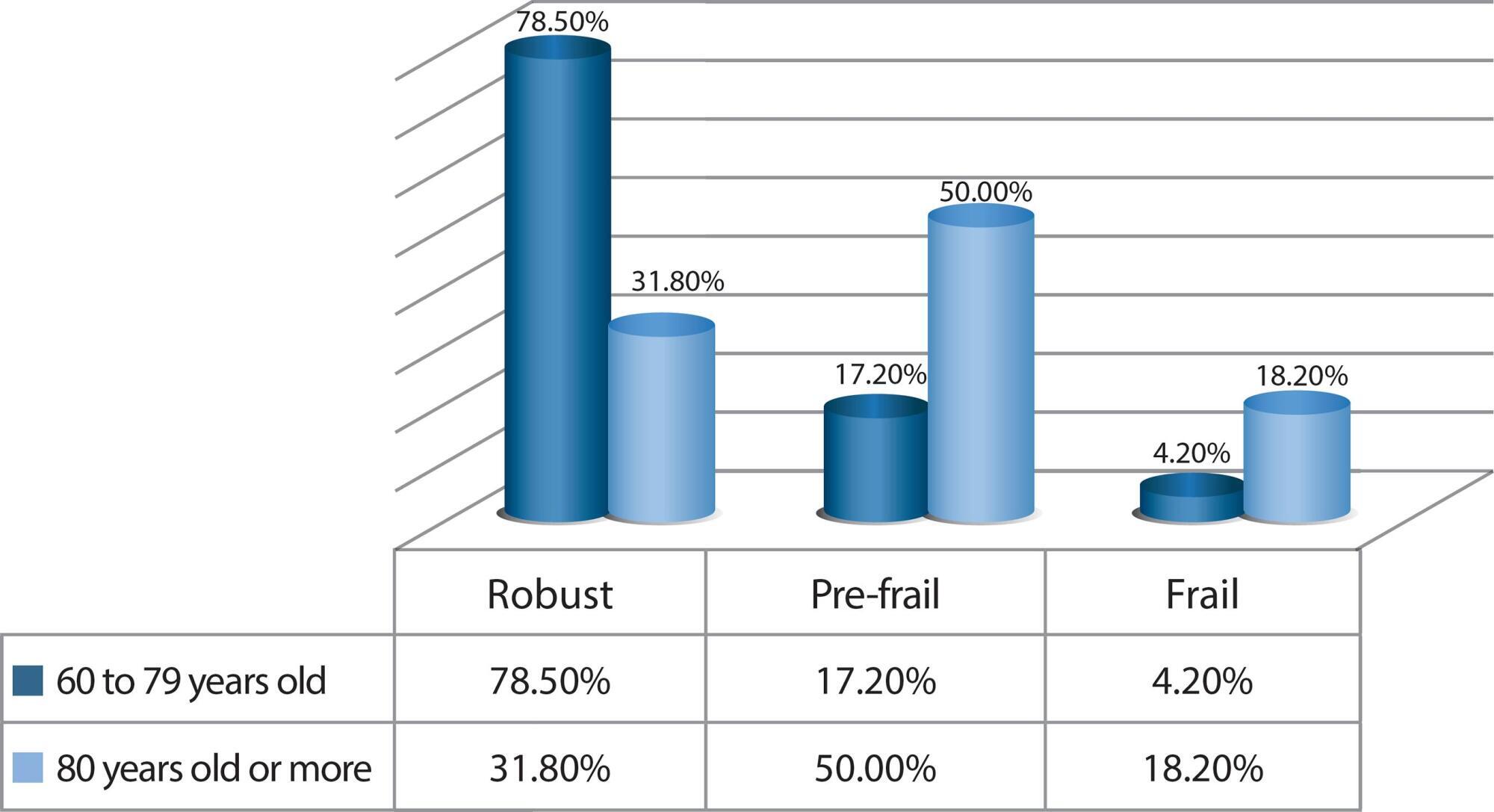
-
ORIGINAL ARTICLE07-31-2020
Educational demands of family members of children with special health care needs in the transition from hospital to home
Revista Brasileira de Enfermagem. 2020;73:e20190156
Abstract
ORIGINAL ARTICLEEducational demands of family members of children with special health care needs in the transition from hospital to home
Revista Brasileira de Enfermagem. 2020;73:e20190156
DOI 10.1590/0034-7167-2019-0156
Views0See moreABSTRACT
Objectives:
to analyze the educational demands of family members of children with special health care needs in the transition from hospital to home
Methods:
qualitative research conducted between February and June 2018, using the handbook on creativity and sensitivity dynamics, from the sensitive creative method; the participants were nine family caregivers of children admitted to a public hospital in Rio de Janeiro; the data were subjected to French discourse analysis
Results:
the educational demands were clinical, centered on the categories complex and continuous care, technological care, modified habits, medication, development and mixed care, and social, related to the supplies and rights of children
Final Considerations:
the social educational demand has emerged as a new demand to be incorporated in the care of these children. The transition from hospital to home should be progressive and have the nurse as its coordinator, with the objective of providing participatory, safe, quality care, articulated within a social network
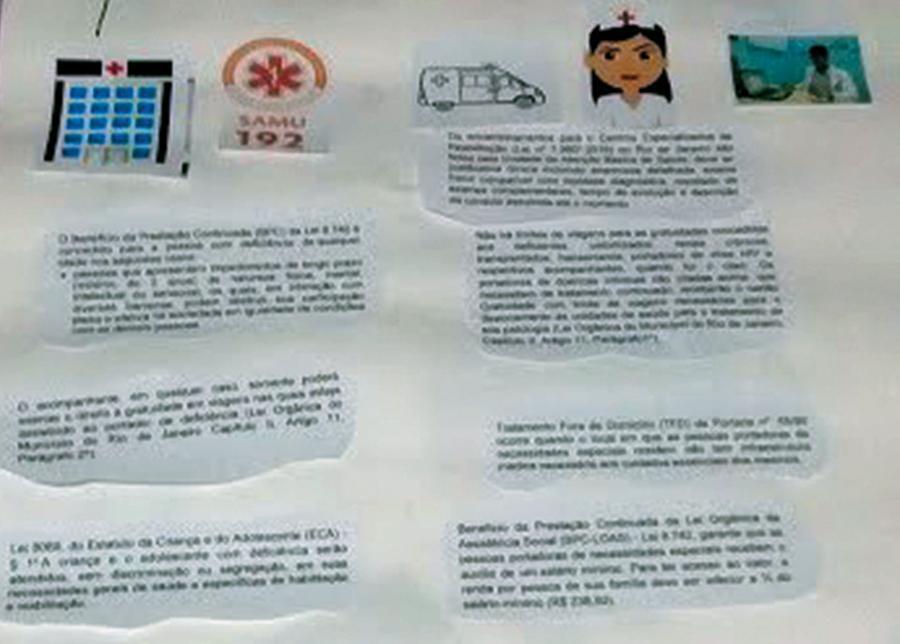
-
EXPERIENCE REPORT07-31-2020
(In)visibility of children with special health needs and their families in primary care
Revista Brasileira de Enfermagem. 2020;73:e20190071
Abstract
EXPERIENCE REPORT(In)visibility of children with special health needs and their families in primary care
Revista Brasileira de Enfermagem. 2020;73:e20190071
DOI 10.1590/0034-7167-2019-0071
Views0See moreABSTRACT
Objectives:
to discuss the (in)visibility of children with special healthcare needs and their families in the Primary Health Care scenario.
Methods:
experience report about the difficulties faced by researchers from different regions of Brazil to locate children with special healthcare needs in the scope of primary care.
Results:
the main reason for these children and their families to be “unknown” and, therefore, not assisted in PHC, is the fact that they are followed-up by institutions/outpatient clinics and specialized and/or public rehabilitation clinics, or even because they have private health insurance.
Final Considerations:
transferring care responsibility to the Primary Health Care teams to specialized and rehabilitation institutions may be related to the lack of knowledge of the care demands of this group, as well as to the relevance of care centered on rehabilitation and the specialty instead of the long-term care, one of the features of primary health care.
-
ORIGINAL ARTICLE07-15-2020
Influence of health care practices on the burden of caregiver mothers
Revista Brasileira de Enfermagem. 2020;73:e20190154
Abstract
ORIGINAL ARTICLEInfluence of health care practices on the burden of caregiver mothers
Revista Brasileira de Enfermagem. 2020;73:e20190154
DOI 10.1590/0034-7167-2019-0154
Views0See moreABSTRACT
Objectives:
to explore the influence of health care practices on the burden of caregiver mothers of children with special health needs.
Methods:
observational, analytical, cross-sectional, quantitative study. Participation of 100 caregiver mothers, who responded the following instruments: characterization instrument; Burden Interview for Informal Caregivers; Perceptions of Family-Centered Care – Parents version; Evaluation Instrument for Primary Care – Child Version. For statistical analysis, were used the Spearman’s Correlation and univariate and multivariate linear regression analysis.
Results:
the mean burden score was 47.99. There was a negative correlation between the burden and the domains of collaboration and support of the Perceptions of Family-Centered Care scale. In the multivariate linear regression model, the longitudinality variable maintained a significant relation with the burden (p = 0.023).
Conclusions:
a shared, longitudinal and integrated care between families and health services can ease the burden of caregiver mothers.
-
ORIGINAL ARTICLE08-20-2021
Resilience of family caregivers of children and adolescents in treatment of neoplasms and associated factors
Revista Brasileira de Enfermagem. 2021;74(6):e20190388
Abstract
ORIGINAL ARTICLEResilience of family caregivers of children and adolescents in treatment of neoplasms and associated factors
Revista Brasileira de Enfermagem. 2021;74(6):e20190388
DOI 10.1590/0034-7167-2019-0388
Views0See moreABSTRACT
Objectives:
analyze the level of resilience of family caregivers of children and adolescents hospitalized for cancer treatment and associated factors.
Methods:
cross-sectional study, carried out in 2018, with 62 family caregivers in a university hospital in the state of Rio Grande do Sul, Brazil. The instruments CDRisc-10-Br, SRQ20, PSS-14 and WHOQOL-Bref were used to measure resilience, minor psychological disorders, stress, and quality of life, respectively. Inferential statistics were used.
Results:
female caregivers, married, with one child and who practice some predominated religion. They were classified as having a moderate level of resilience (48.4%); with suspicion for minor psychological disorders (45%) and high level of stress (41%). In terms of quality of life, they were satisfied in the Physical, Psychological and Social Relations domains; and dissatisfied in the Environment domain.
Conclusions:
there were direct weak to moderate correlations between the level of resilience and quality of life and inversely with stress and minor psychological disorders.
-
ORIGINAL ARTICLE12-07-2020
Construction and validation of an educational gerontotechnology on frailty in elderly people
Revista Brasileira de Enfermagem. 2020;73:e20200800
Abstract
ORIGINAL ARTICLEConstruction and validation of an educational gerontotechnology on frailty in elderly people
Revista Brasileira de Enfermagem. 2020;73:e20200800
DOI 10.1590/0034-7167-2020-0800
Views0See moreABSTRACT
Objective:
to construct and validate an educational gerontechnology on frailty in elderly people.
Method:
a methodological study developed in three stages: educational video construction, validation by expert judges and elderly people. Validation was carried out by 22 judges and 22 elderly people. Educational Content Validation Instrument was used for judges and questions adapted from the Suitability Assessment of Materials questionnaire for elderly people. For validation, agreement criterion greater than 80% was considered, verified using Content Validation Index and binomial test.
Results:
the video addresses recommendations for elderly people at risk of frailty and health-promoting habits, using cordel literature. An agreement greater than 80% was verified in all items assessed by judges and the target audience.
Conclusion:
the video proved to be valid in terms of content and appearance by judges and elderly people, with the potential to mediate health-promoting educational practices in healthy aging.

-
REVIEW07-09-2021
Nursing care for patients in post-transplantation of hematopoietic stem cells: an integrative review
Revista Brasileira de Enfermagem. 2021;74(3):e20200097
Abstract
REVIEWNursing care for patients in post-transplantation of hematopoietic stem cells: an integrative review
Revista Brasileira de Enfermagem. 2021;74(3):e20200097
DOI 10.1590/0034-7167-2020-0097
Views0See moreABSTRACT
Objectives:
to analyze the available evidence on the nursing care provided to patients after hematopoietic stem cell transplantation.
Methods:
integrative review with the search for primary studies in four databases and a virtual health library. A broad search strategy was used, including research published in English, Brazilian Portuguese, or Spanish, between 2008 and 2018, totaling a sample of 42 studies.
Results:
the studies were grouped into three categories: multiple nursing care (n=19), first-line care (n=18), and self-management of care (n=5).
Conclusions:
nursing care is critical, comprising patients’ physical, psychological and social aspects. It occurs in hospital and home contexts, mainly involving technical actions and health guidance. The evidence identified provide subsidies for decision-making; however, most studies are of the non-experimental type, indicating the need for conducting intervention research.
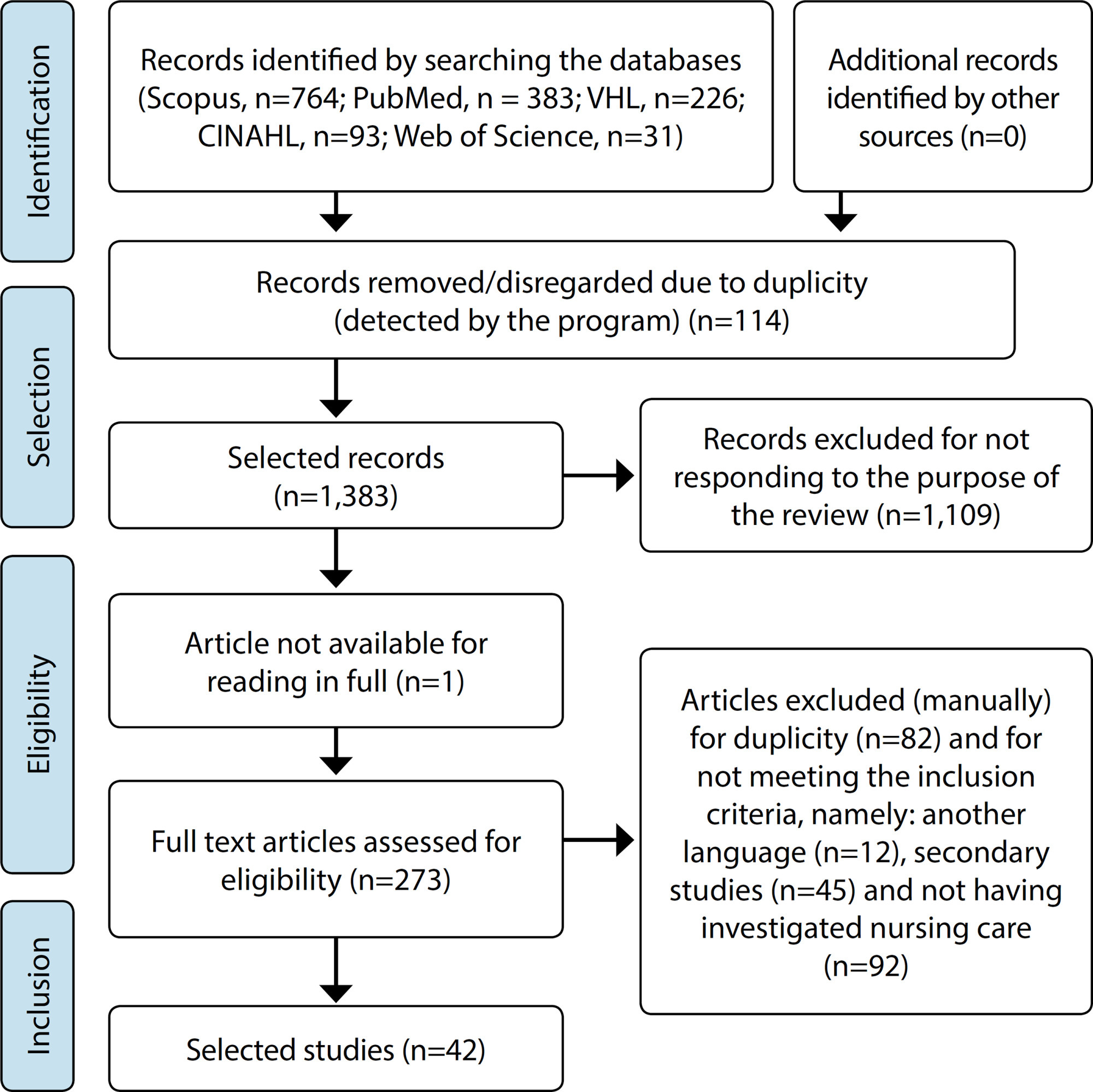
Search
Search in:
Nuvem de Tags
Adolescente (85) Atenção Primária à Saúde (239) COVID-19 (91) Criança (91) Cuidados de Enfermagem (269) Educação em Enfermagem (151) Educação em Saúde (139) Enfermagem (930) Enfermagem Pediátrica (86) Estudantes de Enfermagem (77) Estudos de Validação (131) Família (87) Idoso (208) Promoção da Saúde (99) Qualidade de Vida (104) Saúde do Trabalhador (86) Saúde Mental (145) Saúde Pública (82) Segurança do Paciente (150) Tecnologia Educacional (100)



